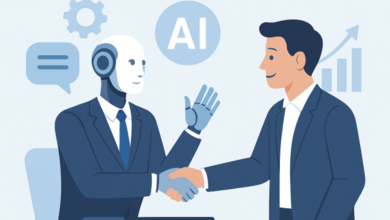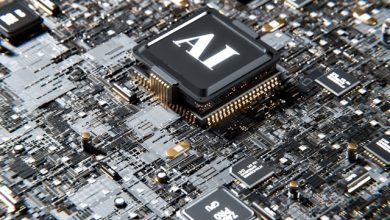
Telecom has always been synonymous with speed, where fast connections, rapid downloads, and near-zero latency define the industry’s promise. However, many of the critical decisions that shape customer experience and network performance still suffer from delays under the surface. These delays can lead to missed opportunities, dissatisfied customers, or inefficient resource use.
Artificial Intelligence is poised to change this dynamic profoundly. Instead of building systems that merely process information, we are now creating intelligent architectures that interpret, decide, and adapt in real-time. This shift transcends technology itself; it ushers in a new cognitive era where telcos begin to think and respond instantly, with agility and context-awareness.
Real-time thinking: From baseline to business model
In today’s competitive telecom landscape, the advantage lies not in the volume of data but in the speed of insight and action. Real-time AI enables customer interactions precisely timed to their context, anticipates network pressures before they arise, and orchestrates marketing campaigns that evolve dynamically, minute by minute, rather than quarterly. This approach represents value engineering at speed, where milliseconds translate directly into millions in revenue and efficiency. Operators who master real-time thinking can launch new services faster, personalise offers more effectively, and optimise network utilisation, setting themselves apart in a highly competitive market.
The true power of AI in product engineering lies in its obsession with timing, precisely when a system delivers value. Consider the instant a subscriber’s data usage reaches 95%, the moment a device crosses national borders, or the split second a network node degrades in performance. These micro-moments, though fleeting, represent critical opportunities for AI to deliver contextual, actionable insights. Unlike legacy analytics that offered static maps, AI functions as a live compass, guiding telcos with real-time direction and nuance. These small, real-time insights accumulate into macro-level impacts, improving customer satisfaction, reducing operational costs, and enhancing network resilience.
Embedded intelligence at the core
Instead of applying intelligence as an afterthought, an AI-first approach should be applied to all core offerings . Intelligence works best when it is embedded to solve business problems. An AI-first approach helps by avoiding stitching AI at later stages and instead focuses on embedding intelligence into the core design itself. This reduces unnecessary costs, which come from afterthought designs that try to solve problems reactively.
AI-native models in telecoms are evolving beyond simply analysing behaviour—they now actively influence it. Whether through real-time offer engines that tailor promotions instantly based on customer context or intelligent orchestration of networks that dynamically allocate resources, this embedded cognition is transforming the telco value chain from the ground up. Intelligence is no longer an added layer but an integral core capability that powers seamless and adaptive experiences.
Decisioning: From descriptive to decisive
This evolution marks a fundamental change in decision-making processes. Whereas traditional analytics answers “what happened?”, AI focuses on “what now?” Telcos leverage AI to intercept customer churn before it manifests, detect fraud early, and proactively activate services that anticipate customer needs.
While predictive analytics still provide value, it is prescriptive intelligence that drives true return on investment by enabling organisations to shape the future actively rather than passively forecast it. This ability to act decisively in real-time reshapes business models and opens new avenues for monetisation and customer engagement.
Intelligent networks that learn and evolve
The proliferation of 5G, IoT, and edge computing has introduced layers of complexity that traditional rule-based systems cannot manage effectively. Manual configurations struggle to scale across the vast variables in modern networks, making real-time optimisation a monumental challenge.
Reinforcement learning algorithms optimise bandwidth dynamically, unsupervised models detect outages before they affect service, and self-healing networks transition from concept to reality. This embedded intelligence is woven deeply into network infrastructure, not just as an external software layer but as a core cognitive element. Consequently, telcos can now train systems that evolve behaviour over time, moving beyond static programming to adaptive learning. This continuous learning ensures networks remain efficient, resilient, and capable of delivering superior service in an ever-changing environment.
Autonomous customer experiences by design
Designing customer experiences is not an afterthought; a successful product has well-thought-out designs and connected journeys. AI provides critical capabilities to overcome design challenges by bringing together a federated data layer that connects across multiple data silos, thereby uncovering critical insights to enhance customer experience. The end goal is not to have a system which forces customers to manually connect through multiple systems.
Trusted AI: Built through transparency
As AI’s role expands, so does the imperative for transparency and trustworthiness. Explainable AI (XAI) has become a foundational principle, requiring every prediction, trigger, and automated decision to be auditable and understandable. This is critical not only for regulatory compliance but for fostering confidence among stakeholders, including customers, partners, and employees.
Systems incapable of explaining their decisions should not enter production, as accountability is essential for sustainable AI adoption. Trusted AI is not a feature, it’s a prerequisite for responsible innovation and long-term impact.
As the telecom industry embraces this new era of embedded intelligence, the potential to revolutionise connectivity and customer engagement is immense. Real-time AI not only enhances operational efficiency but also creates new pathways for innovation.





